Article
Wunderbar Wurzburg
Author(s):
Residenz, the opulent palace of Germany's prince bishops, is the main reason most tourists visit Wurzburg.
Photography by the authors
Yes,
is wonderful and the Residenz, the reason most tourists come to this city — a one-hour train trip from Frankfurt — is gorgeous, but the visit surely makes some tourists wonder if Prince Bishop of Würzburg Johann Philipp Franz von Schönborn ever, ever, thought his excess was over the top. Literally.
Here the views impact when you look up. This UNESCO World Heritage Site may seem nothing special from its exterior except its size but inside its ceilings are overwhelmingly outstanding, but perhaps troubling.
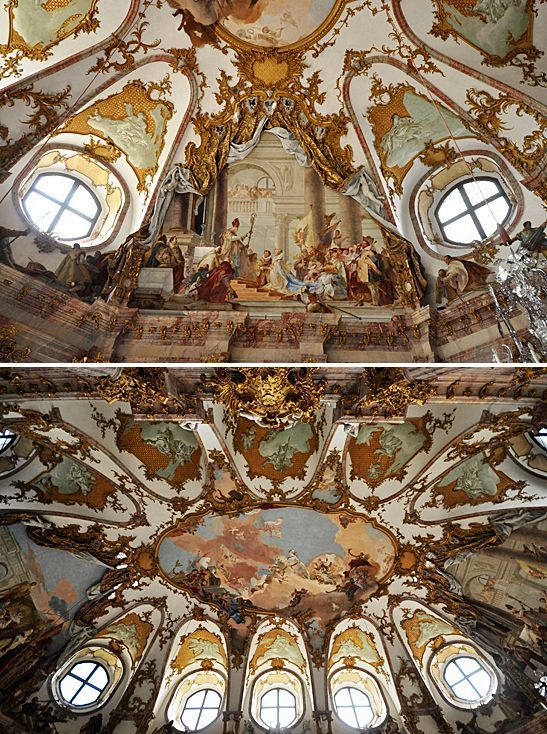
We tell a Wurzburg friend we are bothered a bit by a bishop, a man of the cloth, surrounding himself with such conspicuous confirmation of wealth.
“The prince bishops were more princes than bishops,” she says. “They represented the dictatorship of Europe and the reason so many Germans turned their backs on the feudal system — and the church — and went to America.
“Napoleon,” she continues, “once called it ‘the nicest parsonage in Europe.’ He actually slept here on three occasions.”
is
Today tourists can view and appreciate such Baroque ecclesiastical overindulgence. We were not the ones taxed or tithed to pay for it, and it gorgeous. It took 24 years to build and was finished in 1744 although the decoration and extensions continued under other bishops. The buildings were significantly damaged in an air raid in World War II.
Even the foyer is impressive. Guests didn’t walk from the railway station as we did — they came in carriages and the lobby was made big enough for six horses to turn in even pulling a carriage. You ascend the dramatic grand staircase, and then gape up at the largest ceiling fresco in the world.
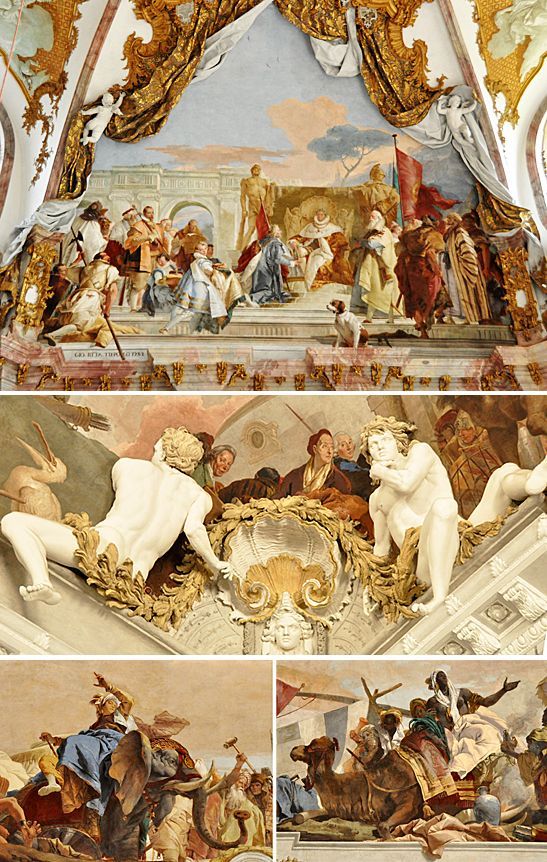
The
is almost too much to take in. Frescoes painted by the artist, Giovanni Battista and his sons, show scenes in local history and imagined events from around the world.
trompe l'oeil
Battista had not travelled further than Venice and reputedly made geographical errors in his renderings of the elephant and the camel, errors not apparent to us, but his efforts fascinate from the tapestries that are actually not cloth but painted, to the dog in the foreground that looks like a three-dimensional statue sitting on the rail but again is simply a flat painting. Battista (the man with red hair in the center of the middle image) slyly put himself in one of his frescoes.
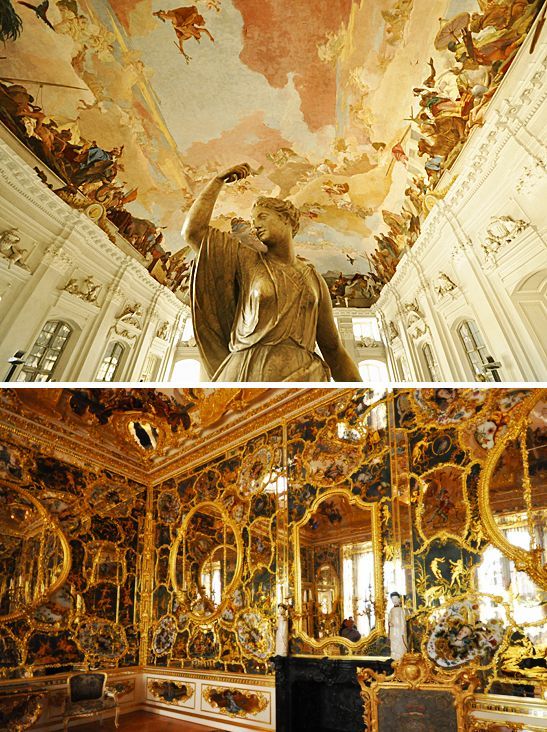
run during the visitor season and can be requested in English. Elena, our guide, takes us from room to room pointing out items we might not have noticed on our own. We stop in the Mirror Cabinet, the most extravagant room in the Imperial Apartments. It was completed in 1745 and completely destroyed exactly two centuries later in the air raid of March 1945. The room was reconstructed from a mirror fragment, photographs and a watercolor painting of the year 1873.
“The Mirror Room took four years to fashion 200 years ago but it took eight years to recreate from 1979 to 1987,” Elena says. “Much of the art and furnishings of the Residenz was put into safe storage during the war but when this bedchamber was recreated they couldn’t find the bath tub! I think someone must have sold it on eBay.”
We leave the gilded heights of the Residenz to go deep into the labyrinth of the Hofkeller. Those vaulted wine cellars were constructed with 16-foot thick walls by Balthasar Neumann, the same architect who designed the palace above. This wine estate has been producing Franconia wine since 1128 which makes it the oldest wine estate in Germany. It’s also one of the largest, producing 0.85 million bottles a year.
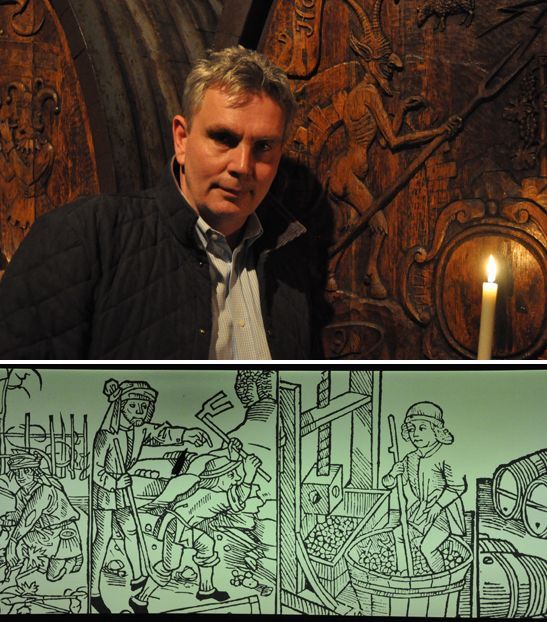
We meet Jochem Gummersbach, the events promoter of the Staatlicher Hofkeller, in his underground world that is almost 3,000 feet long and 20 feet high that extends under the Residenz. He tells us his “Bacchus Corner” where three gigantic casks were placed in 1784 held what constituted, in those days, the pay for the castle’s servants.
Wine is replacing beer as Germany’s favorite drink, muses Gummersbach. It is even becoming popular with university students.
“Universities are intellectual,” he says. “Wine is emotional, the other side of the medal, the coin.”
He shows us a back-lit ancient sketch that shows some of Franconia wine history then talks about one of the favorite local students, Goethe, who habitually bought 900 bottles of Franconia wine a year from this estate.
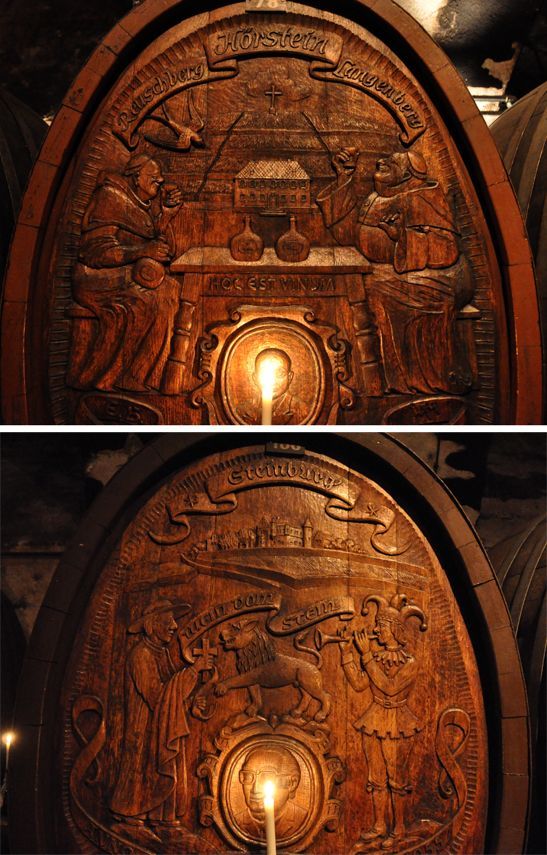
“Goethe drank a gallon of wine a day,” he says. “He was once asked which was more important to him, poetry, wine or women. He reduced the question to either women or wine and replied, ‘It depends on the vintage!’”
Herr Gummersbach is a wine enthusiast, of course, but he makes this point: “Wine connects people. It doesn’t matter whether it’s March or October — you don’t need an online chat room, just go to a wine feast. The last place in Wurzburg to get the sun at the end of the day is the Old Main Bridge. People go there after work to buy a glass of wine and relax. That is our tradition.”
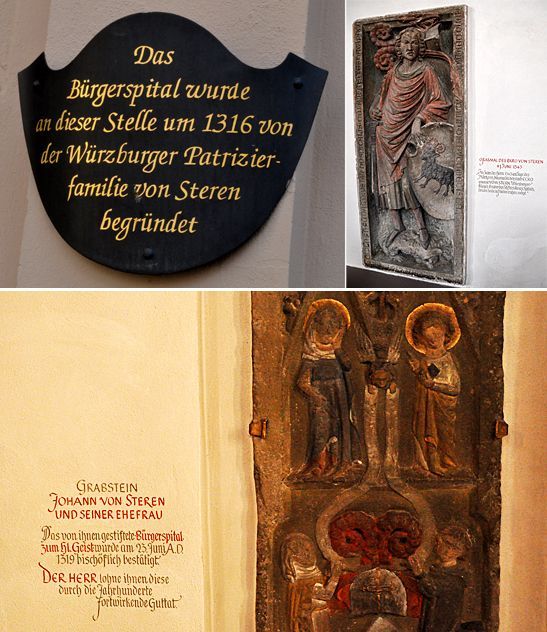
He suggests we might like to choose another tradition: a glass of wine with lunch at a nearby winery café, the
. It turns out there are two hospital buildings here that were funded by successful vineyards, and this one, financed by wealthy citizens, is one of them.
The von Steren family was the impetus to provide this. They built an old people’s home in 1316 to take care of the “Christian afflicted, the hungry and the poor” and planted vineyards in 1334 to fund the service — and to provide a tankard of two and a half pints of wine daily for their patients! In those days water was of such poor quality that wine was safer, even for small children.
Today about 750 senior citizens are being looked after in eight Buergerspital nursing homes.
A five-minute walk to the north brings us to the second hospital funded by a winery. The
is newer, founded in 1576.
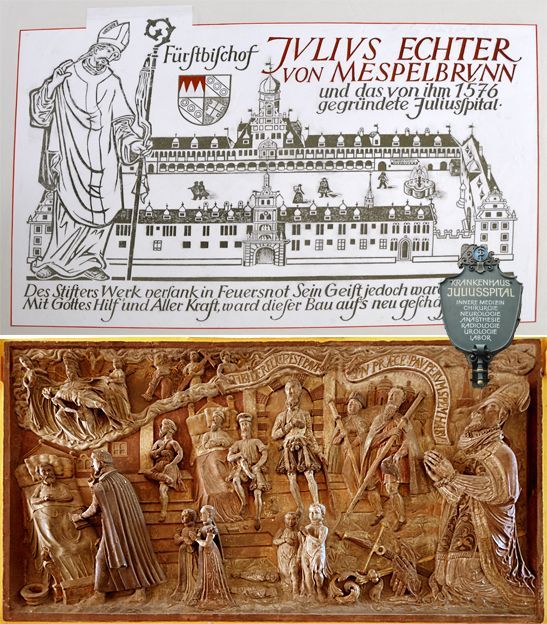
The prince bishop of Wurzburg, Julius Echter von Mespelbrunn, gave personal land holdings to fund a foundation to treat the “poor, sick, destitute and injured people who need medicine for wounds and other forms of illnesses, as well as abandoned orphans, pilgrims en route, and other persons in need."
That encompasses a lot of potential clients and to maintain the foundation’s finances he deeded what has since become the second largest wine estate in Germany. And one might argue possibly the best: a 1950 Riesling Auslese was served at the coronation of Queen Elizabeth II in England.
As we study a stone carving on the wall that shows its beginnings as a hospital, we stop a nurse who is walking by and learn the Juliusspital now has 365 beds for hospice and palliative care, and provides a counseling centers for seizure disorders, nursing and geriatric care.
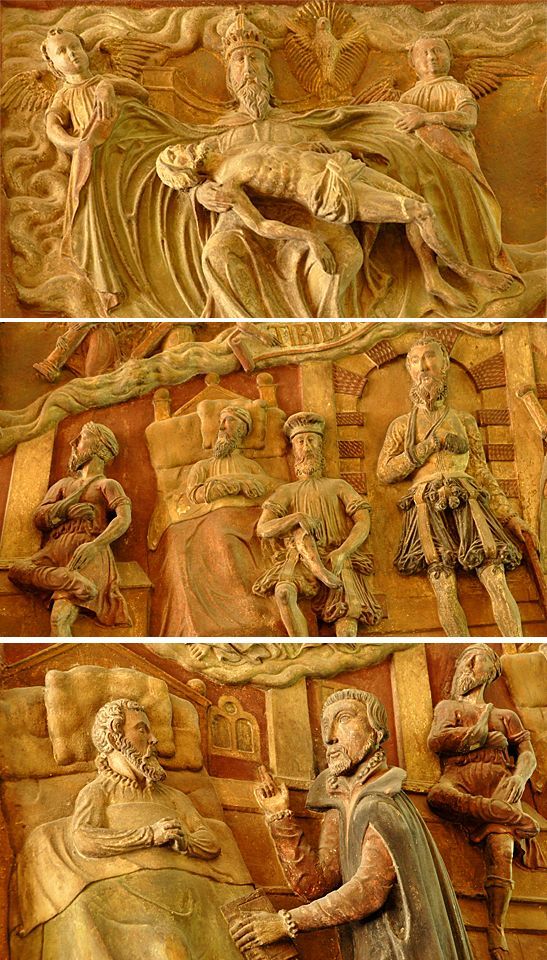
That makes us look more closely at the wall carving. One patient seems far gone, two angels appear to be holding his shroud and the person with a crown on his head (the prince bishop-doctor perhaps) seems resigned to the patient’s demise. Two patients are in slings, one with the sling over the wrong shoulder — as any Boy or Girl Scout would notice, but what’s the attendant (who is probably a cleric rather than a doctor) doing holding a patient’s lower limb at the bedside? And what’s with the two finger salute where the attendant is holding possibly a Bible and perhaps giving the Last Sacrament to a resigned patient? Trolling the web doesn’t help; we couldn’t get details from any source.
But there was once a man who worked a mere ten-minute walk from this location. He was not a physician either, but he has done more for patients than any medieval attendant. He singlehandedly revolutionized the practice of medicine. He is our next story. His name was Wilhelm Conrad Roentgen.
.
The Andersons, who live in San Diego, are the resident travel & cruise columnists for Physician's Money Digest. Nancy is a former nursing educator, Eric a retired MD. The one-time president of the NH Academy of Family Practice, Eric is the only physician in the Society of American Travel Writers. He has also written five books, the last calledThe Man Who Cried Orange: Stories from a Doctor's Life




